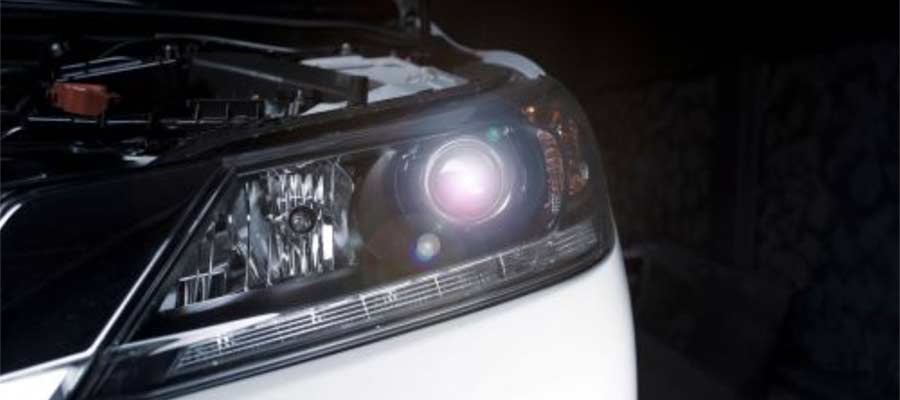
Discover the legality of HID lights and learn about regulations, benefits, and tips for compliance. Ensure your vehicle lighting meets legal standards. Regarding car lights, High-Intensity Discharge (HID) lights are known for being bright and clear. But as more people use them, there are often questions about whether they’re actually legal. This article will look into that question and discuss the rules and benefits of HID lights for cars.
Understanding HID Lights
Before we discuss whether HID lights are legal, let’s first understand what they are. HID lights, sometimes called Xenon headlights, work differently than regular halogen bulbs. They use a mix of special gases and metal salts to make light. Unlike halogen bulbs, they don’t have a little wire inside. Instead, they make light by sparking electricity between two points. This unique way of working makes HID lights shine brighter and use energy better than halogen bulbs.
Benefits of HID Lights
1. Enhanced Visibility
One big plus of HID lights is how well you can see with them. They make a bright, white light that helps you see the road better, especially when driving at night.
2. Longevity
HID lights usually last longer than regular halogen bulbs. Because they don’t need to be changed as often, using HID bulbs can save you money in the long run.
3. Energy Efficiency
Even though HID lights are brighter, they use less power than halogen bulbs. This means they don’t use up as much fuel and put less stress on the car’s electrical system.
4. Aesthetic Appeal
Car enthusiasts like HID lights because they give cars a modern, relaxed look. The bright, white light from HID bulbs makes cars look sharp and stylish, which many people appreciate.
Legal Considerations
While HID lights offer numerous benefits, their legality varies depending on jurisdiction and specific regulations. Here are some key factors to consider:
1. Color Temperature
Many places have rules about the color of car headlights. HID lights usually give off a cooler, bluish-white light, while halogen bulbs have a warmer glow. Some places don’t allow headlights that aren’t within a certain color range, which could make certain HID kits or changes you make to your lights illegal.
2. Proper Installation
Whether HID lights are legal also depends on how you install them. If you don’t install HID kits correctly, they can create too much glare and blind other drivers, which is dangerous. It’s really important to install HID lights correctly and make sure the headlights are adjusted correctly so they shine where they should and don’t blind anyone.
3. OEM vs. Aftermarket
HID lights that come with the car straight from the manufacturer are usually considered legal because they’ve been tested a lot to meet the rules. But if you put in HID lights yourself after buying the car, they might not follow all the rules, which could cause legal problems.
4. Certification and Compliance
HID lights need to meet specific standards to be allowed on public roads in certain places. These standards make sure the lights are safe and work well enough. Before you put HID lights in your car, you must check if they meet the rules and standards where you live.
Regulations and Enforcement
Different places have different rules about using certain kinds of car lights called HID lights. Some places ensure everyone follows these rules, while others might need to check more or focus on other driving problems. But drivers should know that if they use HID lights that don’t follow the rules, they might get fined, get a ticket, or even have to get their car checked out.
Tips for Legal HID Usage
To ensure compliance with HID lighting regulations, consider the following tips:
1. Research Local Regulations
Get to know the rules about car lights where you live. Look out for limits on things like the color of the light, how it’s put in, or changes you make after you buy the car.
2. Choose Quality Products
Choose HID kits and parts made by trusted companies that care about making good products and following the rules. Please avoid cheap stuff that hasn’t been checked to ensure safety.
3. Professional Installation
If you’re considering switching to HID lights, get someone who knows what they’re doing to put them in for you. Doing it right means you’re following the rules and ensuring the lights won’t blind other drivers or cause other safety problems.
4. Regular Maintenance
Ensure you take care of your HID lights so they work well and follow the rules. Change the bulbs when needed, and regularly check if they’re shining in the right direction and working right.
Conclusion
In conclusion, whether HID lights are legal depends on different things like their color, how they’re installed, and if they follow the rules. Even though HID lights make it easier to see, last longer, and save energy, drivers must follow the law. This means checking local rules, picking good products, and ensuring they’re put in and cared for properly. By doing these things, drivers can enjoy the perks of HID lights without breaking any rules.
FAQs
- Are HID lights legal for use on public roads?
HID lights can be legal, but compliance depends on color temperature, installation, and local regulations.
- What color temperature is legal for HID lights?
Legal color temperature varies by jurisdiction, so research local laws to ensure compliance with regulations.
- Can I install HID lights myself?
While possible, professional installation is recommended to make sure that it’s proper alignment, compliance, and safety on the road.
- What are the risks of non-compliant HID installations?
Non-compliant HID installations may result in fines, citations, or safety hazards such as glare for other drivers.
- How do I maintain legal HID lighting?
Regular maintenance, choosing quality products, and adhering to installation guidelines are crucial to maintaining legal HID lighting on your vehicle.





